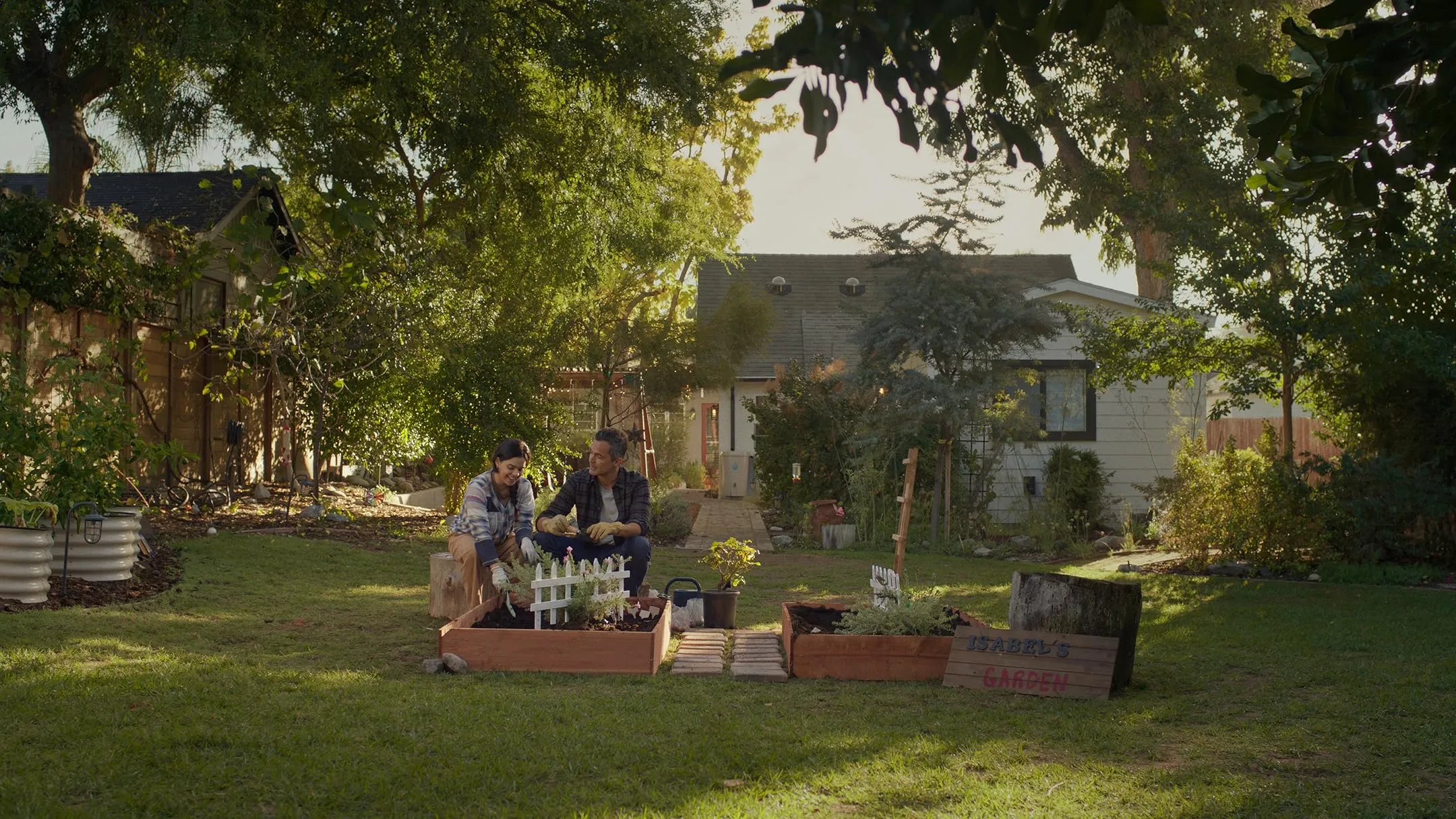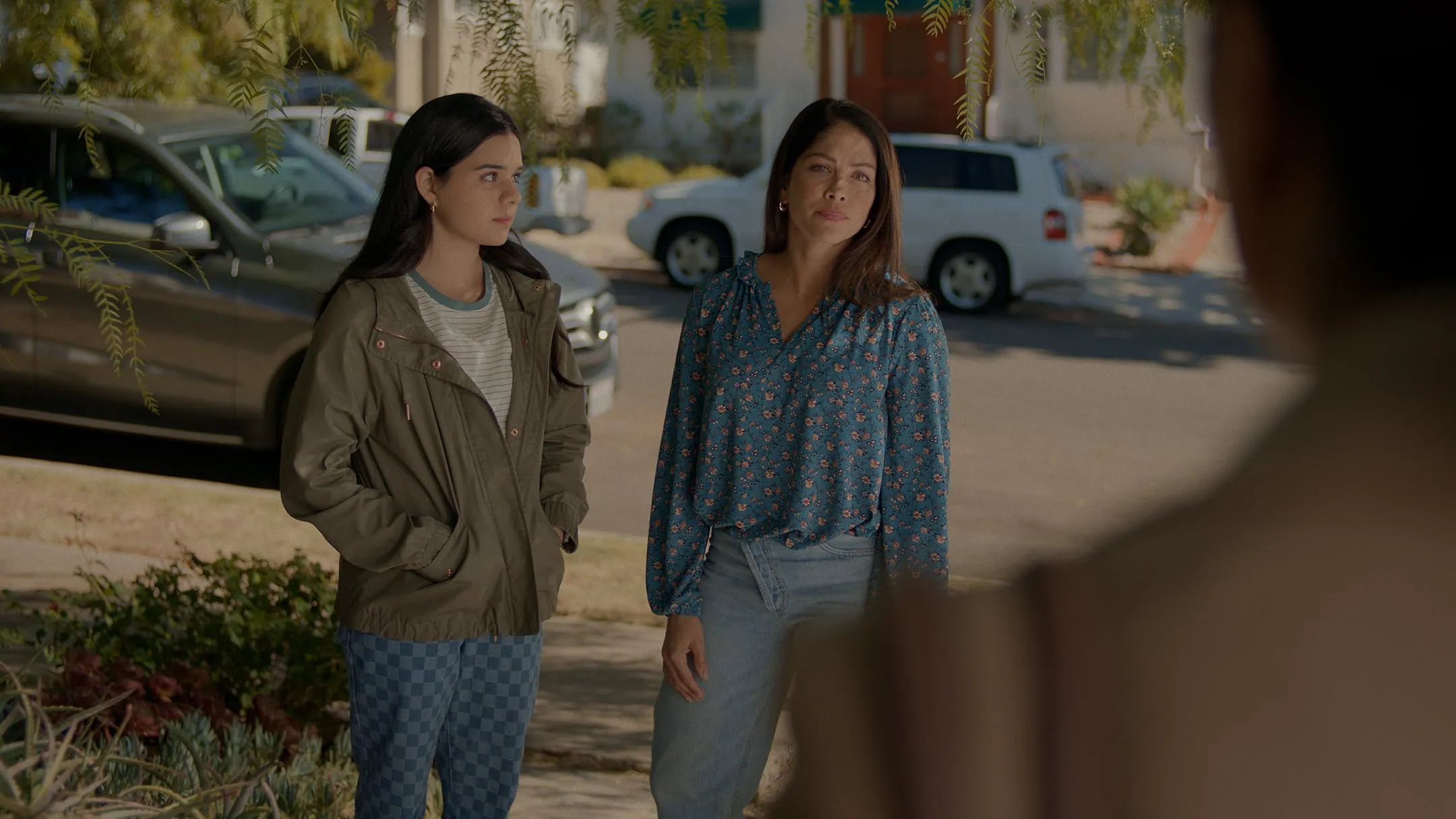Maya’s story unfolds as she pursues a coveted role in television journalism while unexpectedly becoming part of a complicated family setup. She steps into a role that demands both professional rigor and a delicate touch with her stepdaughter, Isabel.
The narrative follows her as she manages a demanding career alongside the responsibility of nurturing a bond with a teenager whose life has been upended by the untimely passing of her husband, Diego. The film highlights the internal friction that arises when ambition collides with deeply personal obligations, setting the stage for an exploration of emotional sacrifice and renewal.
The setting, a modest town in Northern California, serves as a quiet yet effective counterpoint to the intense personal trials faced by the characters. Its understated environment mirrors the internal states of those living there. The seasonal markers of Christmas and New Year’s Eve amplify the narrative’s mood by mixing festive moments with periods of introspection and loss.
This backdrop provides a framework that magnifies the everyday pressures imposed by family expectations and community standards, inviting viewers to reflect on the costs associated with personal and professional choices.
Characters in Focus
Maya emerges as a determined professional caught between a career in television and new family responsibilities. She displays a clear passion for her work while confronting personal challenges that arise from grief and the need to connect with Isabel. Her reactions reveal a deep inner conflict as she struggles with the loss of Diego and the pressure to maintain a stable family environment.
The portrayal of her emotions is detailed, showing how each decision she makes is colored by her past experiences and the weight of her current obligations. Her performance captures a spectrum of feelings, ranging from sharp professional drive to moments of tender vulnerability when dealing with the complexities of her stepdaughter’s needs.
Isabel is presented as a character marked by initial sensitivity and evolving self-assurance. Early scenes emphasize her delicate nature, yet as the narrative unfolds, her interactions with Maya begin to shift. Her character stands as a sign of hope and the possibility of recovery following personal loss.
The subtle progression in her demeanor mirrors the growth that occurs when trust and care are given the chance to develop. Her presence on screen acts as a visual cue for the quiet strength found in accepting change and opening up to new forms of love.
Diego, though seen mostly through reflective sequences, leaves a lasting imprint on the narrative, his memory influencing both Maya and Isabel. Christina’s role adds layers of complexity to family dynamics, her conflicted attitude introducing moments of tension that enrich the relational drama.
Grace appears as a wise figure whose interactions provide comfort and guidance, her character offering a steady hand during turbulent moments. Each supporting role contributes to a rich network of interpersonal exchanges that deepen the film’s exploration of connection and personal recovery.
The Garden’s Echo: Themes and Symbolism
The film portrays the weight of sorrow after Diego’s passing, capturing the strain of accepting a deep personal void. Key scenes express the quiet moments of mourning and the painstaking process of regaining a sense of self.
Maya’s struggle to balance her career and personal loss is depicted through subtle visual cues and carefully paced narrative moments that invite viewers to sense the pain behind every smile.
The narrative presents the intricate connections that form within a mixed family. The evolving relationship between Maya and Isabel offers a clear picture of tentative trust emerging over time. The screen displays both friction and tender instances where old wounds and new hopes coexist.
The tension present in interactions among family members brings to light the real challenges and unexpected rewards of merging different lives into a shared experience.
A cultivated garden appears as a central symbol throughout the film. The deliberate focus on the growth, care, and occasional neglect of this natural space mirrors the inner states of the characters.
The nurturing of the garden reflects a process of careful attention and transformation, suggesting that even amid harsh seasons, there exists a potential for renewal and subtle beauty in personal change.
Hints of past interests, like the references to a cherished book series, connect the characters with their earlier selves. These nostalgic elements bridge past experiences and current challenges, offering a subtle reminder that personal history plays a role in shaping present emotions.
The film leaves the viewer with an invitation to consider how memory and small, personal actions may influence the capacity for change and the growth that follows loss.
Direction, Visual Style, and Cinematography
Kit Rich’s dual roles as director and writer show a creative vision infused with personal memories. Her influence is visible in the carefully crafted narrative that examines the subtleties of family life amid personal loss. She incorporates elements that allow the audience to witness raw emotion and unfiltered moments on screen.
The film employs animated picture book segments in a manner that offers insight into the characters’ deeper thoughts and feelings. These sequences stand out by conveying inner conflicts and unspoken dreams, setting a tone that encourages viewers to look beyond the surface.
The camera work is deliberate, with close-ups capturing fleeting expressions and wide shots that reveal the quiet beauty of its setting. The cinematography choices contribute to the film’s measured pacing, allowing viewers to absorb the layers of meaning embedded in each frame.
Light and shadow work together to reinforce the film’s mood, enhancing moments of silent reflection as well as scenes of intense emotion. The set design plays its part too, with carefully chosen color schemes that signal shifts in the characters’ emotional states, reinforcing the narrative without overwhelming it.
Sound also plays a role in emphasizing key moments; the musical score is designed to mirror the film’s narrative beats, accentuating both moments of introspection and scenes of heightened tension. The interplay between musical cues and visual imagery creates a rhythm that guides the viewer through the unfolding drama.
The design of the garden and its surroundings, captured through meticulous lighting and a restrained palette, reflects the inner lives of the characters and adds depth to the visual narrative. Each element is thoughtfully positioned to support a layered visual storytelling approach that invites the audience to consider the delicate balance between external realities and internal emotions.
Rhythm and Unfolding of the Plot
The film arranges its story in a measured sequence that gradually builds momentum. It opens with a calm introduction that establishes key characters and their internal conflicts.
This measured beginning gives viewers the space to understand Maya’s struggle with balancing professional aims and familial duties, along with the delicate emergence of a connection between her and Isabel. As the narrative proceeds, it shifts into a more energetic middle section.
Flashback sequences are used effectively, providing glimpses of past events that clarify the motivations behind current actions and deepen the emotional layers of the characters. These interspersed recollections serve as quiet yet significant markers, enriching the ongoing drama without distracting from the unfolding main story.
Simultaneously, the film manages a balance among different threads. It interlaces the tension of career pressures with the delicate negotiation of family bonds and the personal transformation brought on by loss. This approach ensures that every scene contributes meaningfully to character development and sets the stage for evolving dynamics.
The careful pacing not only allows moments of reflection but also pushes the story into more active territory as events pick up. Such a construction leaves the viewer pondering how each element will continue to shape the emerging relationships and themes.
Emotional Impact and Reflective Insights
The film presents an unflinching look at personal loss and the hard work involved in healing. Specific scenes capture moments of raw pain as characters face the aftermath of Diego’s passing.
Maya’s struggles are portrayed through her quiet expressions and tense silences, giving viewers an immediate sense of sorrow and determination. These scenes stir a response that mirrors the characters’ internal battles and small victories, inviting viewers to connect with their inner emotions. The careful buildup of these moments makes the experience feel direct and relatable.
The narrative sends a clear message about the value of nurturing close connections and accepting life’s inevitable changes. By showing the slow transformation in the relationship between Maya and Isabel, the film highlights the enduring power of care and mutual support.
The depiction of the garden serves as a symbol for personal growth and the passage of time, with its evolution reflecting the characters’ progress through their own challenges. The interplay of loss, recovery, and renewed bonds presents a picture that speaks to anyone who has faced personal hardship, leaving the audience to consider how every small act of care can contribute to healing and change.
The Review
Isabel's Garden
The film presents a heartfelt portrayal of loss and connection, capturing the complexities of blended family dynamics with sensitivity and restraint. Its measured pacing and visual storytelling create an engaging, accessible experience that invites deep emotional response. The work stands out for its sincere performances and careful narrative construction.
PROS
- Sincere emotional portrayal
- Effective visual storytelling with symbolic imagery
- Strong narrative pacing that gradually builds tension
CONS
- Some segments may feel deliberately slow
- Flashback usage can be somewhat repetitive




















































